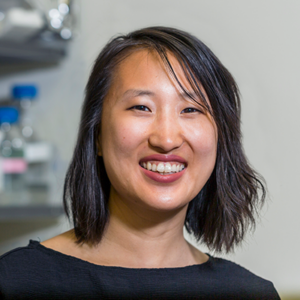52 Yiyin Erin Chen
Bardia Yasari and Zoë Soon
 Yiyin Erin Chen
Yiyin Erin Chen
Our largest organ is the skin, and its health is crucial to the body’s defenses (non-specific defense), so in today’s topic, we’ll be doing an introduction to the works of Dr. Erin Chen, a dermatologist at MIT, to learn about the importance of bacteria that live on the skin. Dr. Chen received her bachelors from the University of Chicago in 2006. She then worked towards her Ph.D. and was able to achieve it in 2011. Because of her passion for medicine, she decided to also pursue her interests in the medical field and become an MD in 2013 from Harvard Medical School.
Dr. Chen’s research involves microbiomes on the skin and their effect on one’s immune system. She studies how microbes use molecular signals in the training of the immune system, the alteration of immune responses based on the microbial communities, and the use of these microbe-host interactions to employ vaccines and treatments for various diseases.
Because of her hard work and dedication, she was awarded the Dermatology Foundation Research Fellowship in 2017, alongside her other great achievements in the field in the following years.
In this topic, we’ll be taking a look at various types of microbiota on the skin, and in order to do that, it is important to know what commensal, transient, and pathological bacteria are. Commensal bacteria are the ones that live on the surface of the skin without causing any damage. Transients are the ones that only live on the skin for a short period of time. They can be pathogenic but generally don’t cause too much damage. And Pathological bacteria are the ones that cause the most problem with the employment of their endotoxins and exotoxins.
It should be pointed out that the skin’s microbiome is not just limited to bacteria but also includes fungi and viruses that thrive on the skin. The composition of these communities also depends on one’s skin type. There are also many various areas on the skin that allow for the growth of various microbial and fungal communities, which change quite fast during puberty as oil and sweat secretions change. Skin microbiota composition is also influenced by skin-to-skin contact, the environment, aging and any weakening of the immune system (e.g. being immunocompromised).
The process of colonization of one’s skin starts from the time they’re a newborn. The skin is usually sterile as a fetus and starts to gain new colonizers merely minutes after birth. Low diversity microbes are the first to start this process, but as the child gets more exposure to the surroundings, the composition changes. Skin-to-skin contact with the birthing parent is recommended in order to facilitate growth of flora that are commensals. In adulthood and during puberty things really start to change, as different areas of the skin experience various levels of humidity and darkness, making the surface more suitable for some microbes than others.
Two examples of skin diseases that are linked to pathological illnesses are caused by Human Papillomavirus (HPV), which causes skin warts and is linked to cervical cancer as well as squamous cell cancer, and the bacteria Treponema Pallidum, which causes Syphilis.
The metagenomic advances have allowed Chen’s team to examine thousands of diseases at once, making it very efficient to discover pathogens. These advances have made ways for scientists to suggest that microbes also contribute to non-infectious pathologies such as Atopic Dermatitis (AD), Psoriasis, Rosacea, and Acne. This suggests that not only do pathogenic microbes make us sick, but also the irregular composition of commensal microbes do as well.
The team has also made an effort to find that disturbance in gut microbiota contributes to disease of immune dysregulation.
The team has lastly worked on different ways in which hair and skin treatments can affect the composition of the transient and commensal microbiome of the skin. One example is the change caused by Vancomycin treatment, which is a Glycopeptide antibiotic treatment.
The study of metagenomics is important as it begins to answer questions about the ways microbiomes can be altered by various skin treatments. Also, understanding microbe-host interactions can help us understand the pathogenesis of skin diseases caused by either microbiome irregularities or cosmetic treatments.
References:
– Chen, Y. E., Ph.D., & Tsao, Hensin, MD, Ph.D. (2013). The skin microbiome: Current perspectives and future challenges. Journal of the American Academy of Dermatology, 69(1), 143-155.e3.
https://doi.org/10.1016/j.jaad.2013.01.016
– Chen, E. Y. (2018). Yiyin Erin Chen, MD, Ph.D., an HHMI Hanna Gray Fellow. HHMI. https://www.hhmi.org/scientists/yiyin-erin-chen.
– Chen, Y. E. (2022, July 11). Yiyin Erin Chen. MIT Department of Biology. Retrieved August 8, 2022, from
https://biology.mit.edu/profile/y-erin-chen/
About the Authors
name: Bardia Yasari
institution: University of British Columbia Okangan
Undergraduate Student
name: Zoë Soon
institution: University of British Columbia Okanagan
Zoë Soon, MSc, PhD, B.Ed.
Associate Professor of Teaching,
IKB Faculty of Science | Department of Biology
The University of British Columbia | Okanagan Campus | Syilx Okanagan Nation Territory

